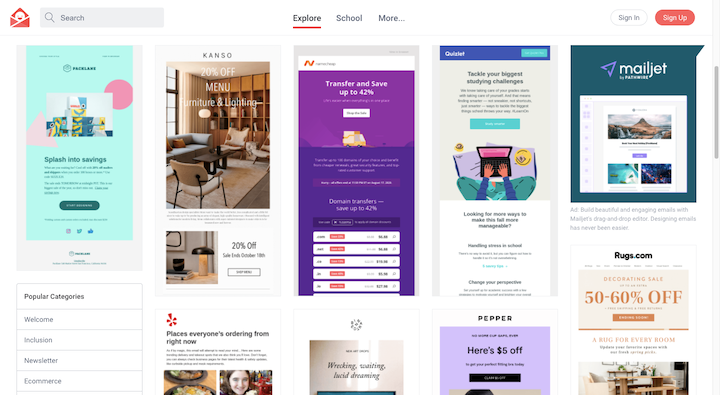Necessary Tips for Crafting High-Impact Web Site Styles
In the world of electronic marketing, the style of a website functions as a vital touchpoint for involving potential clients. To produce high-impact web site layouts, one must think about essential aspects such as target market understanding, customer experience, and visual pecking order. Each of these elements plays a pivotal function in not only drawing in site visitors yet likewise in assisting in significant interactions. The interaction in between these variables can be intricate and nuanced, raising the concern of exactly how to effectively balance them to achieve ideal outcomes. Exploring these strategies can result in transformative end results for your online presence.
Understand Your Target Market

To efficiently comprehend your audience, start by carrying out group evaluations to collect information on age, gender, area, and interests - website design. This info works as a foundation for producing individual personalities, which represent the crucial qualities of your target market. These personas guide decision-making in design elements and content technique, guaranteeing placement with individual expectations
Furthermore, analyzing customer habits through tools like Google Analytics can reveal how site visitors communicate with your website. Metrics such as bounce rates and time on page can highlight areas that require improvement or modification. User surveys and comments likewise offer indispensable insights into preferences and discomfort points.
Inevitably, a deep understanding of your audience is not simply useful yet crucial. It encourages designers to develop even more appropriate, appealing, and useful websites that promote a favorable customer experience and drive desired results.
Prioritize Individual Experience
When creating an internet site, prioritizing customer experience (UX) is extremely important to achieving both customer complete satisfaction and company purposes. A well-crafted UX makes sure that visitors can navigate the website effortlessly, locate the details they require, and involve with material efficiently. To complete this, it is important to take on a user-centered layout strategy that involves understanding individual requires, preferences, and habits.
Begin by carrying out comprehensive research study, consisting of individual studies and usability screening, to gather understandings into exactly how users engage with your website. This data ought to educate layout decisions, ensuring that layouts and features straighten with individual expectations. Structured navigating is necessary; site visitors ought to be able to find information promptly without unneeded clicks or complication.
Furthermore, consider the loading rate of your internet site. A slow-loading site can result in high bounce prices, negatively affecting individual experience. Optimize scripts and images to improve performance.
Finally, make certain that your internet site comes to all customers, including those with impairments. Abiding by accessibility criteria not just widens your target market but also promotes inclusivity. By prioritizing UX, you lay the structure for an effective site that meets both individual needs and company goals.
Embrace Visual Hierarchy
A well-structured visual hierarchy plays a substantial role in boosting individual experience by leading site visitors' interest to the most important components of a web site (website design). By strategically organizing web content, designers can create a clear path for customers to comply with, ensuring they engage with necessary info successfully
To carry out aesthetic pecking order, start by using dimension and scale. Bigger components naturally attract the eye, making them excellent for headlines or calls to activity. Enhance this with contrasting colors that highlight essential areas, as vivid colors can produce centerpieces that catch focus.
Additionally, the placement of components on the web page is essential. Leading the viewer's stare via the design can be attained by positioning essential info at the top or in the facility, where users normally start their aesthetic trip. Including whitespace around elements can likewise boost clearness, making it less complicated for individuals to process information without feeling bewildered.
Lastly, using typography efficiently contributes to visual hierarchy. Various font style designs, weights, and sizes can represent significance, guiding individuals via the web content effortlessly. By accepting these concepts, designers can create an user-friendly experience that promotes click reference engagement and motivates individuals to check out additionally.
Optimize for Mobile
Mobile optimization is essential in today's electronic landscape, as a significant portion of web website traffic comes from mobile gadgets. To make sure a seamless customer experience, web sites need to be made with mobile users in mind. This entails using responsive website design techniques that adjust the design, images, and text to fit numerous display sizes while preserving capability and aesthetics.

Touch targets, such as buttons and web links, have to be appropriately sized, ensuring they are conveniently tappable without errors. Make sure that types are mobile-friendly by decreasing input areas and utilizing dropdowns where applicable, improving the user experience.
Finally, test your web site across various mobile devices and internet browsers to determine any issues that may influence use. By focusing on mobile optimization, you not only enhance customer fulfillment but additionally favorably impact your website's internet search engine position, thus bring in more visitors and improving general involvement.
Implement Strong Branding
A well-defined brand name not just separates you from competitors yet additionally promotes depend on and commitment amongst your target market. This identification should be shown constantly across all electronic touchpoints, including your website, social media, and e-mail interactions.
Visual components such as logo designs, shade schemes, and typography play a vital role in branding. Pick a color palette that resonates with your target audience and mirrors your brand name personality. Make sure that your logo design is versatile and plainly presented on your website, improving brand name acknowledgment.
Content is just as important; your intonation ought to align with your brand name identification, whether it's specialist, friendly, or reliable. Involving storytelling can additionally enhance your brand, producing a psychological connection with users.
Final Thought
To conclude, crafting high-impact web site designs demands a multifaceted technique that includes comprehending the audience, prioritizing customer experience, and accepting visual pecking order. Optimization for smart phones stays imperative, along with the execution of strong branding methods. By integrating these aspects, sites can successfully engage individuals, help with smooth navigation, and foster psychological connections that boost brand identity. Inevitably, adherence to these principles contributes to the production of engaging and reliable digital experiences that reverberate with target market.
To create high-impact site styles, one must take into consideration vital components such as target market understanding, customer experience, and visual power structure.When creating an internet site, focusing on user experience (UX) is paramount to accomplishing both customer satisfaction and service goals.Start by carrying out complete research study, including customer studies click here to read and usability testing, to gather understandings right into exactly how individuals interact with your website. To make sure a seamless user experience, sites need to be developed with mobile individuals in mind.In verdict, crafting high-impact site designs demands a complex technique that encompasses understanding the audience, focusing on customer experience, and welcoming aesthetic pecking order.
Comments on “The Impact of Website Design on Your Site's Search Engine Rankings”